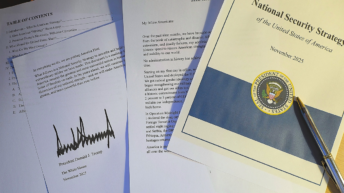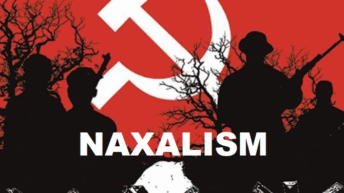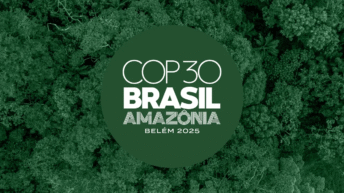
Introduction
In an era defined by escalating climate challenges and shifting geopolitical dynamics, the role of emerging economies in global climate response management has become crucial. BRICS, (which originally included Brazil, Russia, India, China, and South Africa and is rapidly increasing in size and importance by adding new members), has emerged as a transformative factor in international affairs. With a collective share of more than 35% of the global economy and more than 45% of the world’s population,[i] BRICS wields significant influence on the sustainable development pathways. BRICS leadership in climate action is epitomised by the bloc’s commitment to equitable climate governance — the principle of Common But Differentiated Responsibilities (CBDR)[ii].
This article examines how BRICS leverages innovative strategies, financial instruments, and multilateral collaboration to advance global climate risk management. It also examines how the recent geopolitical transformations, including Donald Trump’s re-election in the USA, create opportunities for BRICS to reinforce its leadership position. BRICS leads the Global South in championing climate resilience and sustainable development as pillars of equitable and inclusive climate action.
Financing the Future: The New Development Bank
The New Development Bank (NDB) launched in 2014 is a cornerstone of BRICS’ climate strategy.[iii] The NDB counteracts systemic inequities in global development finance by promoting the movement of resources to develop infrastructure and sustainability within and across member states and other developing nations. NDB follows the principles of equal representation and inclusivity and therefore invests in critical sectors including renewable energy, urban development, and digital infrastructure to make the Global South resilient.
At the 16th BRICS Summit, in Kazan Russia in October 2024, the bloc reiterated its commitment to CBDR[iv] by asserting the major historical responsibility of developed nations for greenhouse gas emissions and proclaiming that global climate policies must be fair. The Kazan Summit underscored that technological innovation and partnerships will be required to fight climate change[v]. BRICS leaders looked at how renewable energy technologies can be perfected and disseminated, how energy efficiency can be improved, and how climate-resilient agricultural practices can be promoted. As pivotal to achieving these goals, the NDB’s pioneering role in funding renewable energy projects and promoting climate-resilient infrastructure work was highlighted for the member countries as for other developing countries and regional blocs.
BRICS in Global Climate Forums
BRICS’ influence extends beyond financial instruments to active participation in global climate forums. BRICS’ mediation for just climate response policies focuses on the sufferings of developing nations due to the disproportionate impacts of the policies of leading industrial powers. By endorsing the CBDR principle, BRICS reaffirms the binding obligation of industrialised countries to lead in emission reduction and the provision of climate finance.
BRICS leaders insisted that developed nations fulfill their Paris Agreement commitments, including the provision of $100 billion annually[vi] for climate adaptation and mitigation in developing countries especially in resource-constrained regions of the Global South.
BRICS integrates its socio-economic development with environmental goals emphasising poverty alleviation, energy access, and infrastructure development[vii]. By linking climate action to broader developmental goals and thus counterbalancing to the Western-led climate initiatives, BRICS serves as a platform to uphold justice and inclusivity in global governance.
The commitment of the bloc to cooperate with the African Union and ASEAN as regional organisations increases its impact. BRICS promotes South-South cooperation which enables the exchange of best practices, and technological and financial capacities in diverse ecosystems and reduces climate vulnerability. Its initiatives include renewable energy projects, reforestation efforts, and water resource management, addressing pressing challenges in climate adaptation.
The annual sustainability forums hosted by BRICS provide platforms for policymakers, scientists, activists, and business leaders to exchange ideas and foster innovation. These forums promote consensus-building on key issues such as carbon markets, green finance, and biodiversity conservation, facilitating the implementation of pragmatic, locally adaptable solutions to global climate challenges.
The U.S. Factor: Trump’s Re-Election and Its Implications
Climate advocates are wary of Donald Trump’s re-election as U.S. President in 2024[viii]. Global climate works had been stalled by his previous administration’s withdrawal from the Paris Agreement and deregulation of the fossil fuel industry. Trump’s return to the presidency will deprioritise international climate finance, and halt progress on emission reduction targets, while disproportionately harming developing nations reliant on outside funds for climate adaptation.
This geopolitical shift opens up an opportunity for BRICS to assert its leadership. Filling the void left by the U.S., BRICS can champion equity and inclusivity in climate finance e.g. through the NDB and other strategies such as using blockchain for efficient carbon footprint tracking and promoting renewable energy projects suitable for developing countries. Internal collaboration among BRICS countries on renewable energy and green hydrogen generation can position this bloc as a model for building climate resilience without depending on the West.
Recommendations for Enhanced Leadership
To solidify its role in global climate management policy-making, BRICS should focus on key actions. First, it must prioritise research by partnering with academia and private enterprises. Efforts should be on climate modeling, AI-based monitoring, and renewable energy technologies.
BRICS should also craft financial tools. The New Development Bank (NDB) can expand green bonds and carbon trading. A climate fund for emerging economies would address the unique challenges of the Global South.
South-South cooperation is vital. Collaborating with regional organisations can boost capacity, share strategies, and improve resilience. Knowledge exchange programs can amplify these efforts.
Investing in technology is criticial. Blockchain and smart contracts can track carbon footprints more efficiently. Internal technology transfers can reduce reliance on external funding.
Renewable energy initiatives must go ahead. Strengthening the BRICS Renewable Energy Fund and creating regional energy grids will cut costs and improve efficiency.
Engaging the public and private sectors is essential. Annual forums can align policies with innovation. Tax incentives can drive investments in green technologies.
Finally, BRICS should champion equitable climate policies in global negotiations. Providing guidance and support on disaster risk reduction and sustainable urbanisation will solidify its leadership in the field of climate management.
Conclusion
The BRICS’s integrated approach to climate adaptation provides a model that prioritises equity, sustainability, and development. The bloc’s potential to reframe the global climate debate rests on financial mechanisms, support for innovation, and inclusive policies. In the face of multiple geopolitical challenges, BRICS is well placed to resist the plunder of the Global South in the name of climate action by some leading powers. BRICS stands as a powerful unifier that can spur transformative change and a sustainably prosperous future for mankind.
[i] Business Today Desk. (2024, October 22). BRICS group accounts for 45% of the world population, and 35% of its economy: Vladimir Putin. Business Today. https://www.businesstoday.in/world/story/brics-group-accounts-for-45-of-world-population-35-of-its-economy-vladimir-putin-450973-2024-10-22 [ii] Kurian, O. C., Sarkar, D., & Suri, S. (2025, January 13). The role of BRICS leadership in forging climate and health strategies for a one-health world. Observer Research Foundation. https://www.orfonline.org/research/the-role-of-brics-leadership-in-forging-climate-and-health-strategies-for-a-one-health-world [iii] Griffith-Jones, S. (2015). Financing global development: The BRICS new development bank (No. 13/2015). Briefing Paper. [iv] Kumar, R. (2024, December 3). 16th BRICS Summit: A step towards a multipolar world order? Manohar Parrikar Institute for Defence Studies and Analyses. https://www.idsa.in/publisher/issue-brief/the-16th-brics-summit-held-in-kazan-in-october-2024-underscored-the-blocs-resilience-and-commitment-to-advancing-a-multipolar-world-order/ [v] Turker, H. (2024, October 25). BRICS Kazan Summit: Ambiguous ambition in pursuit of multipolar world. Geopolitical Monitor. https://www.geopoliticalmonitor.com/brics-kazan-summit-ambiguous-ambition-in-pursuit-of-multipolar-world/ [vi] Organisation for Economic Co-operation and Development. (n.d.). Climate finance and the USD 100 billion goal. OECD. https://www.oecd.org/en/topics/sub-issues/climate-finance-and-the-usd-100-billion-goal.html [vii] Gebert, I. M., & de Mello-Sampayo, F. (2024). Efficiency of BRICS countries in sustainable development: A comparative data envelopment analysis. International Journal of Development Issues, ahead-of-print(ahead-of-print). https://doi.org/10.1108/IJDI-12-2023-0287 [viii] Koshy, J. (2024, November 6). Climate experts worry about Donald Trump’s re-election impact. The Hindu. https://www.thehindu.com/sci-tech/energy-and-environment/climate-experts-worry-about-donald-trumps-re-election-impact/article68837427.ece






Add comment